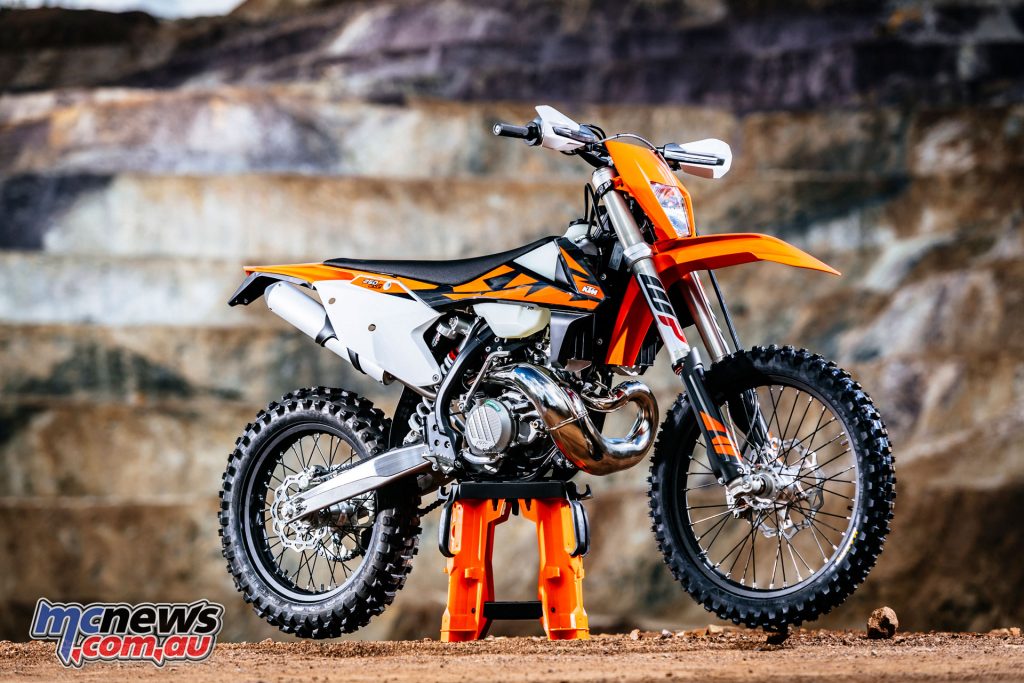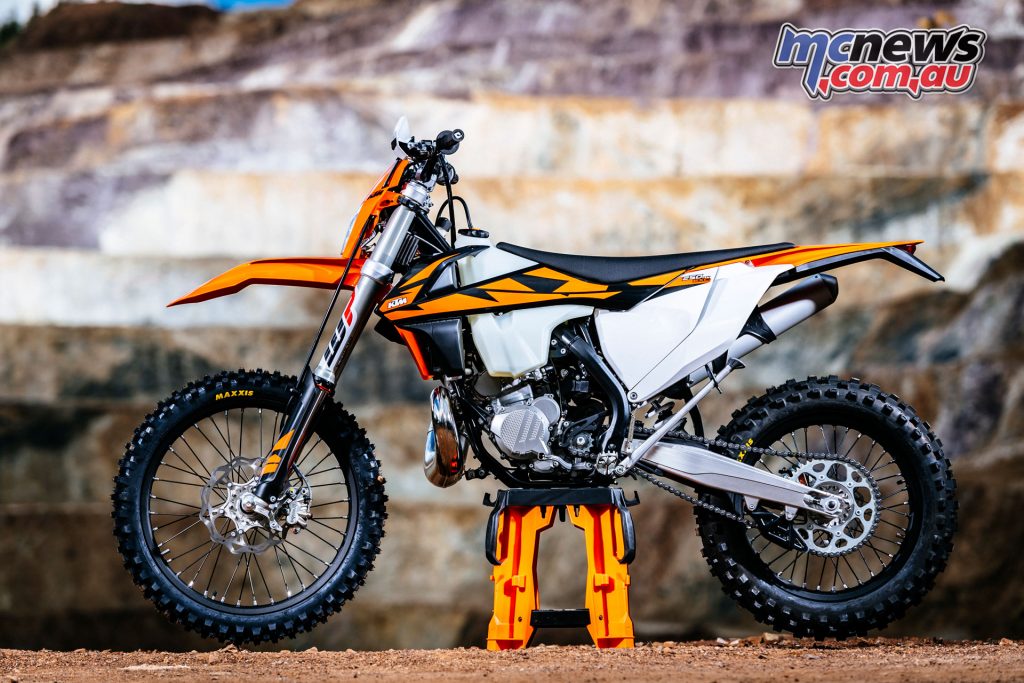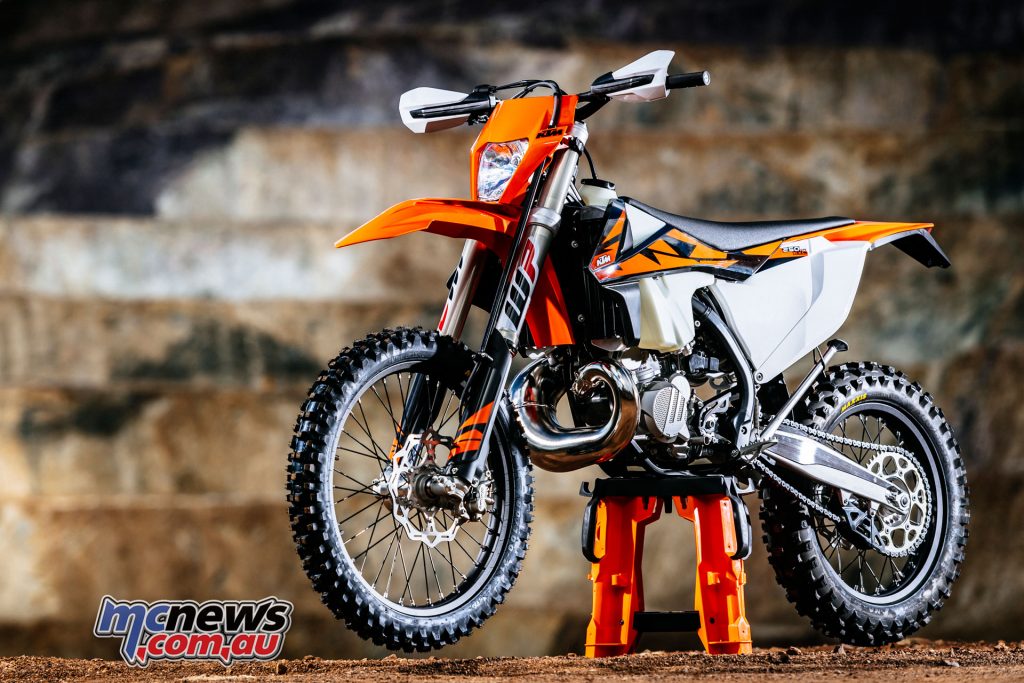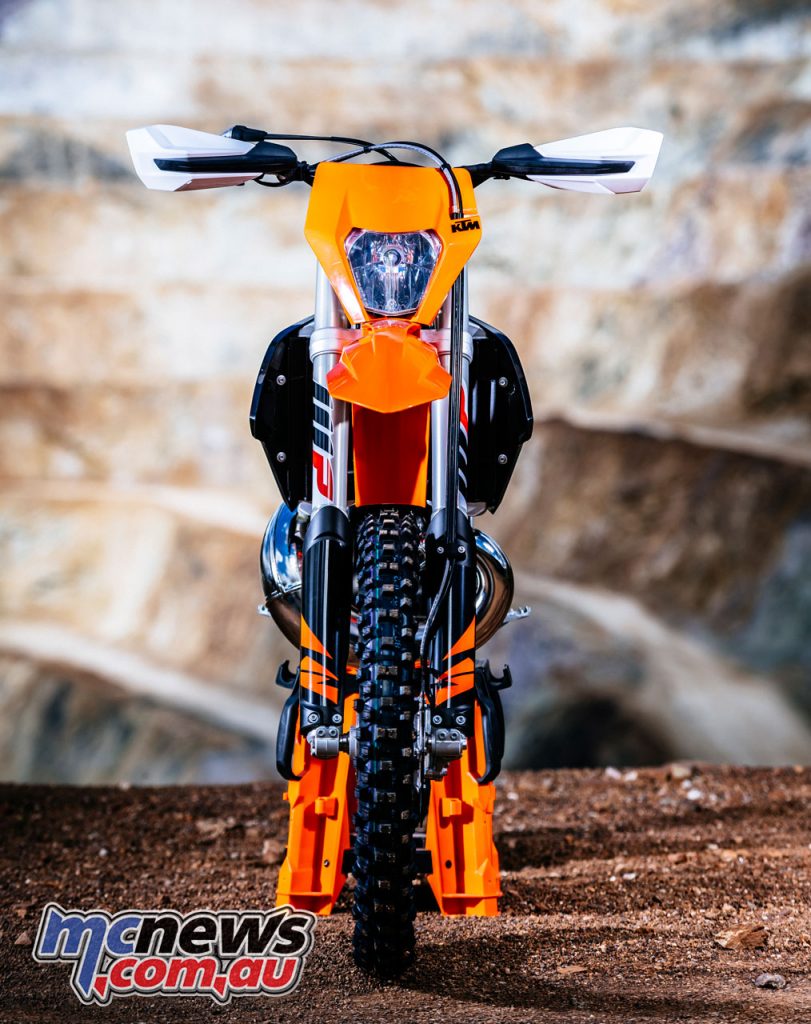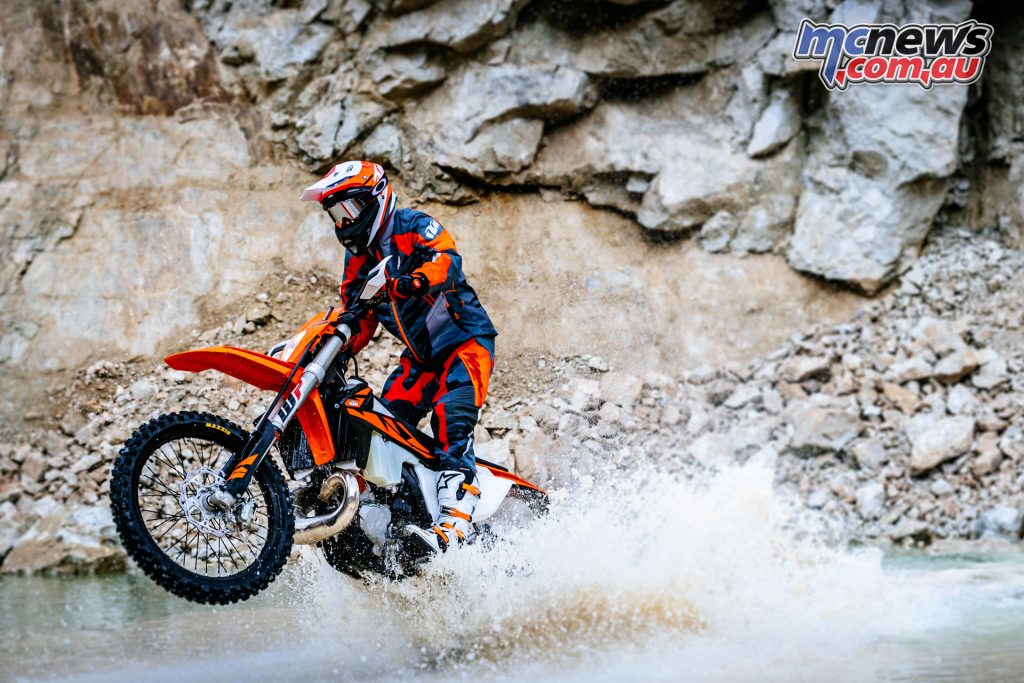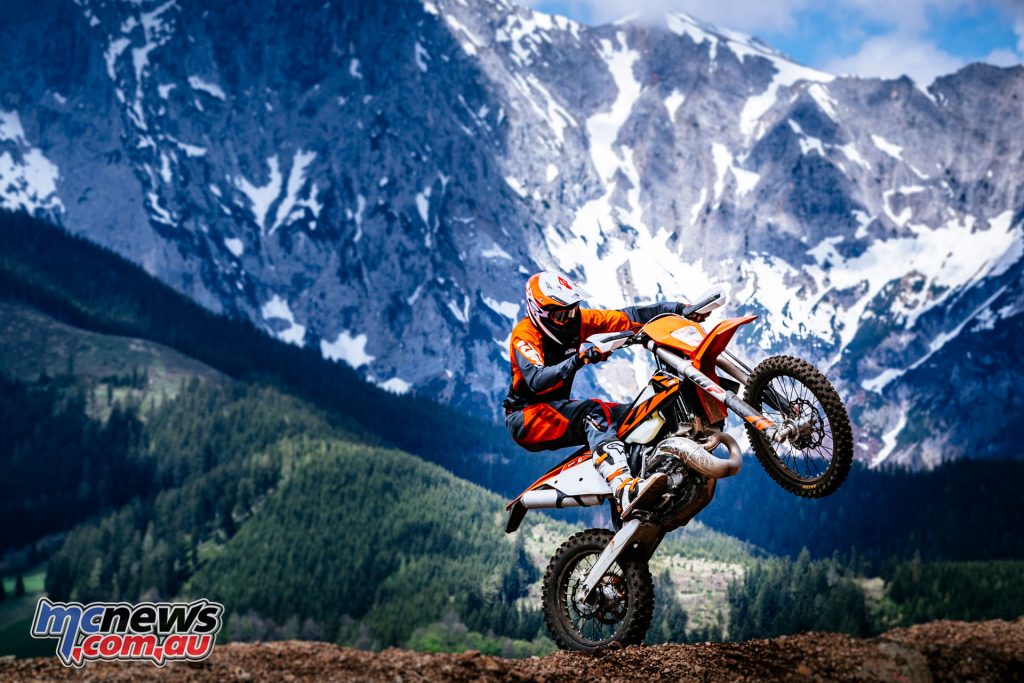2018 KTM two-stroke TPI Enduro range reviewed at the famous Erzberg iron mine
Words: Jonathan Bentman – Photos: Marco Campelli & Sebas Romero
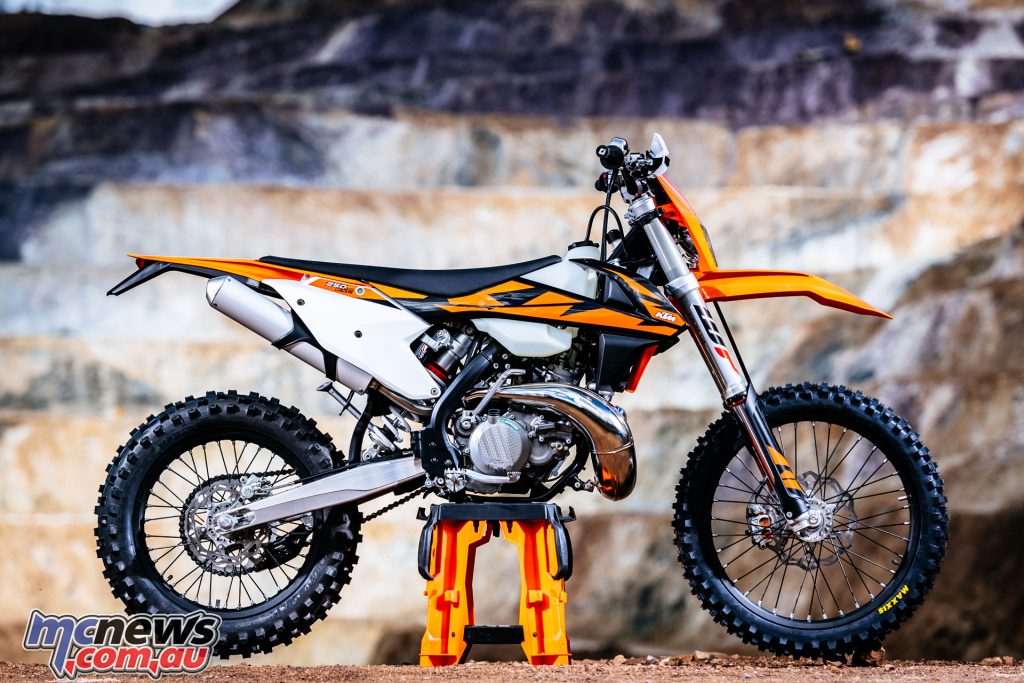
If anything could define the might, the muscle, of KTM, then bringing the first fuel-injected two-stroke enduro to the market is it. But does it need muscle to ride it? With the launch taking place at the infamous Erzberg iron mine you just might think so…
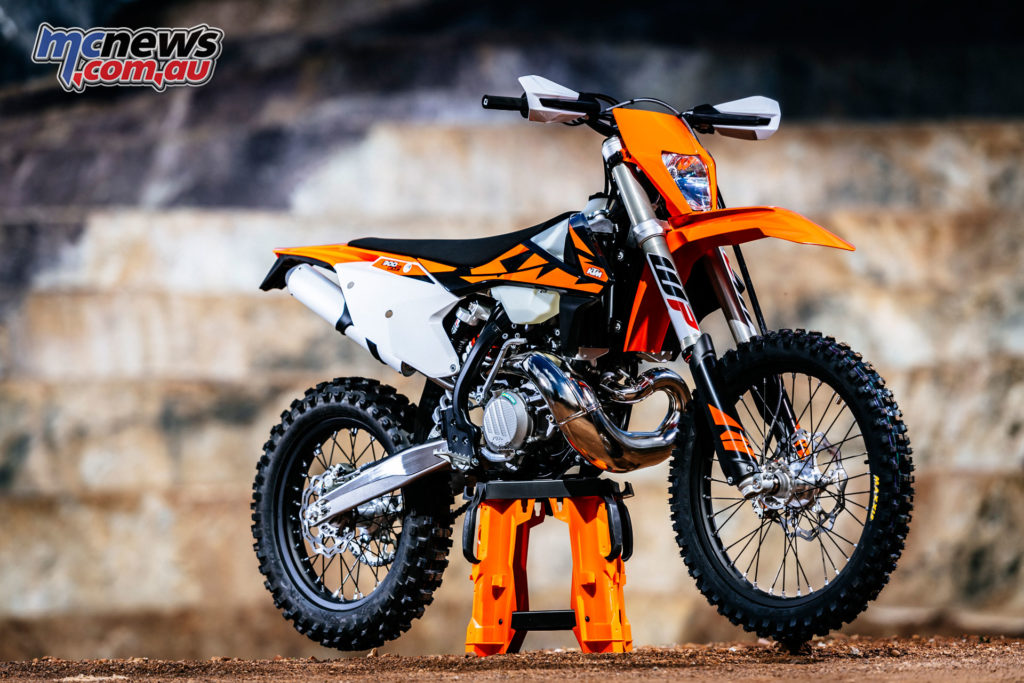
The KTM 300EXC TPI felt entirely normal. Press the start button, blip the throttle a few times, pull in the clutch, select first, ride away. First-second-third –brap, brap, brap – all normal. Wheelspin. Skid. Wheelie. Normal.
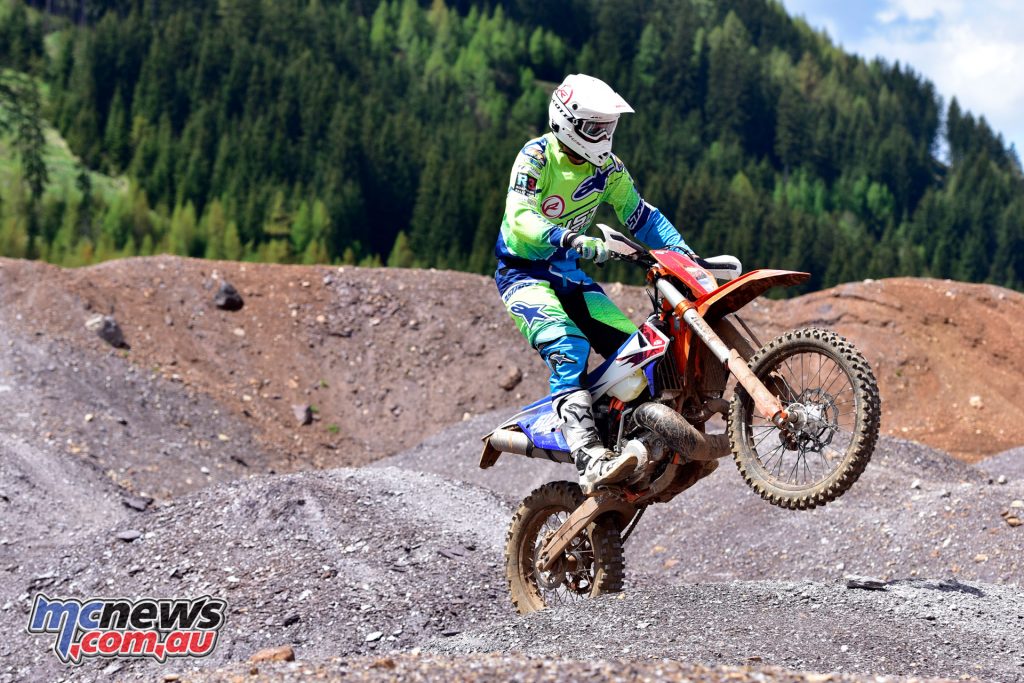
Normal, eh? Yet these TPI models are the big news of 2017. It’s taken KTM 14-years to get here. Fuel injection in four-strokes was comparatively easy, for two-strokes it’s taken over a decade longer to master. This is a remarkable feat that KTM has achieved.
Not quite putting man on the moon stuff, but for so long creating the fuel-injected two-stroke dirt bike been so near impossible. So it’s a bit curious that the feeling is ‘normal’, yet I’m almost certain KTM is celebrating that very fact.
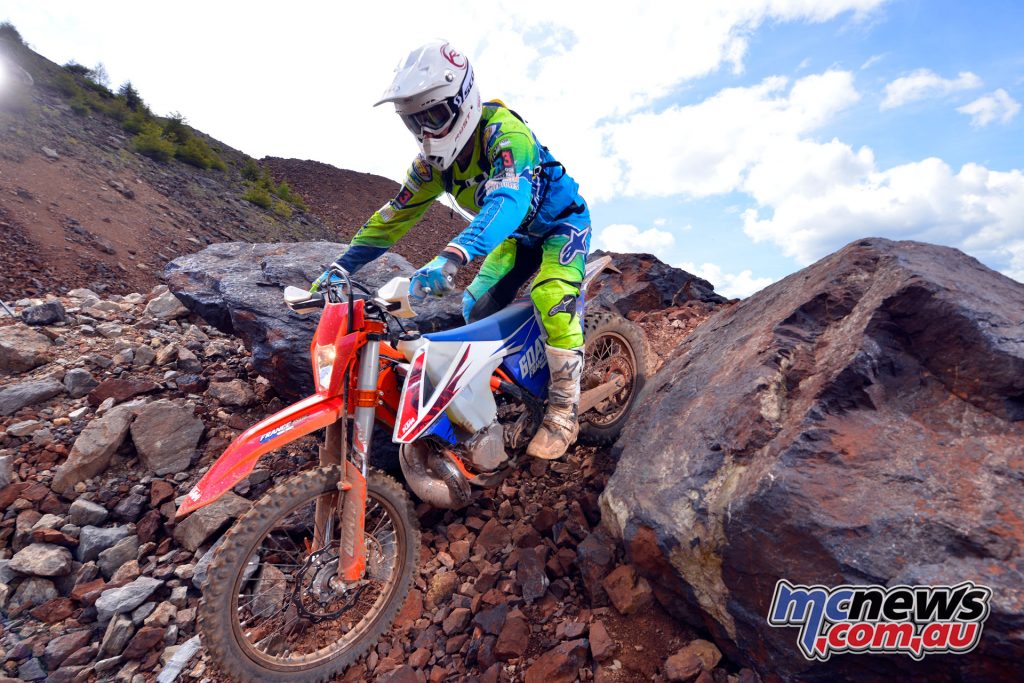
Erzberg, the launch venue, is of course not normal. It’s something huge. A mountain eaten alive, rock-by-rock, given man’s hunger for iron ore – to make steel, to make stuff like these KTMs. This is also a place of legend, only not for the prodigious quantities of iron ore extracted, but for its brutal reputation for crushing men and machines.
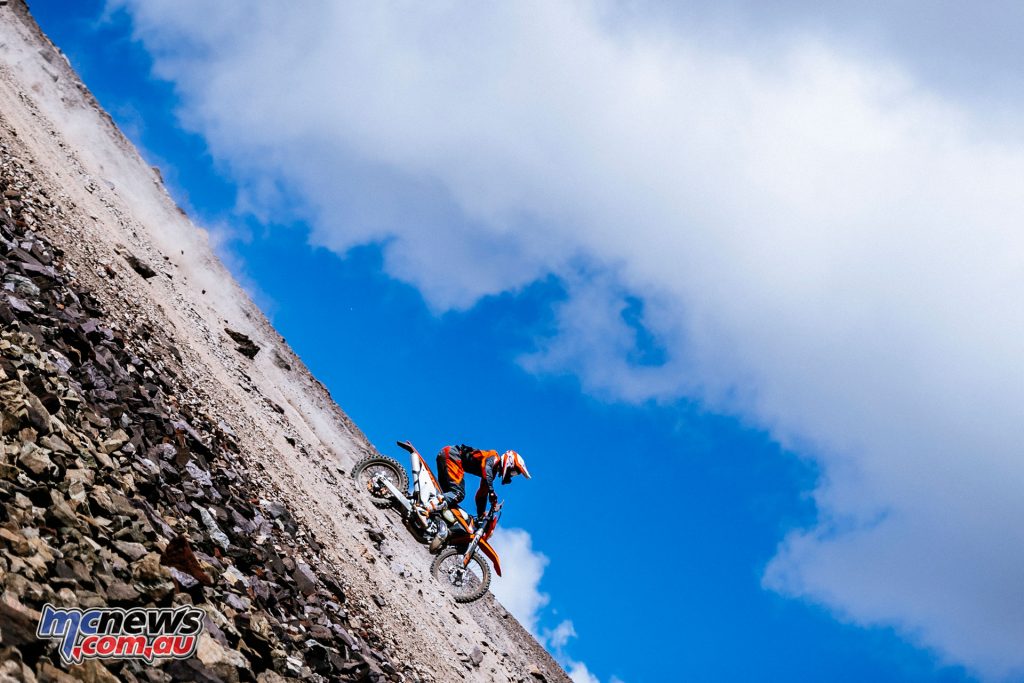
In the form of the Erzberg Rodeo Extreme Enduro this giant mine wreaks its revenge – most of the world’s motorcycling population will at some point have seen film footage of enduro bikes, and riders, falling end-over-end down its precipitous slopes.
KTM has brought us to Erzberg because, for all of its fearsomeness, this is the company’s playground, its two-stroke enduros have built a reputation based on being able to conquer this pitiless terrain. Prove that the TPI equipped EXCs can thrive here and we can pretty much be assured they’ll be good anywhere. Only I’m not sure, as a clubman level rider, that I’m as well equipped for this terrain.
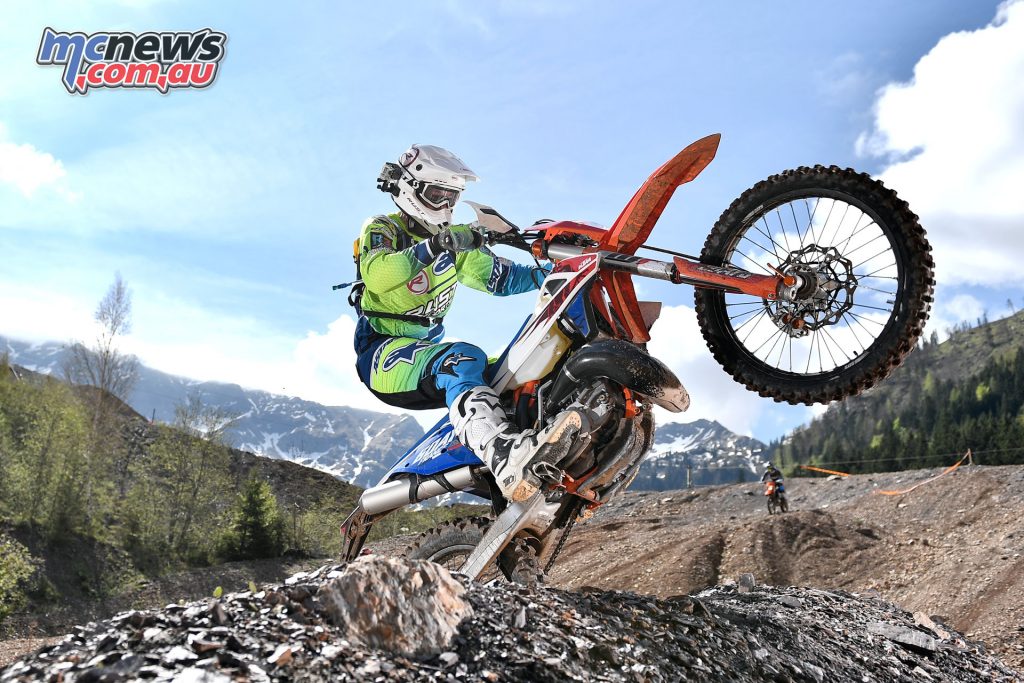
Fortunately, as said, when it comes to this new fuel-injected EXC, I have something of a magic parachute. As ever the 300EXC can deal with stuff other enduros can’t. The motor is amazing, the chassis just so well balanced – normal 300EXC practice.
It’s only when given time to breathe (between mind-buzzingly huge hill climbs and descents), that I get to realise this is the new normal, rather than the old normal. For the KTM EXC TPI experience is the same as the old EXC experience, only a little bit better.
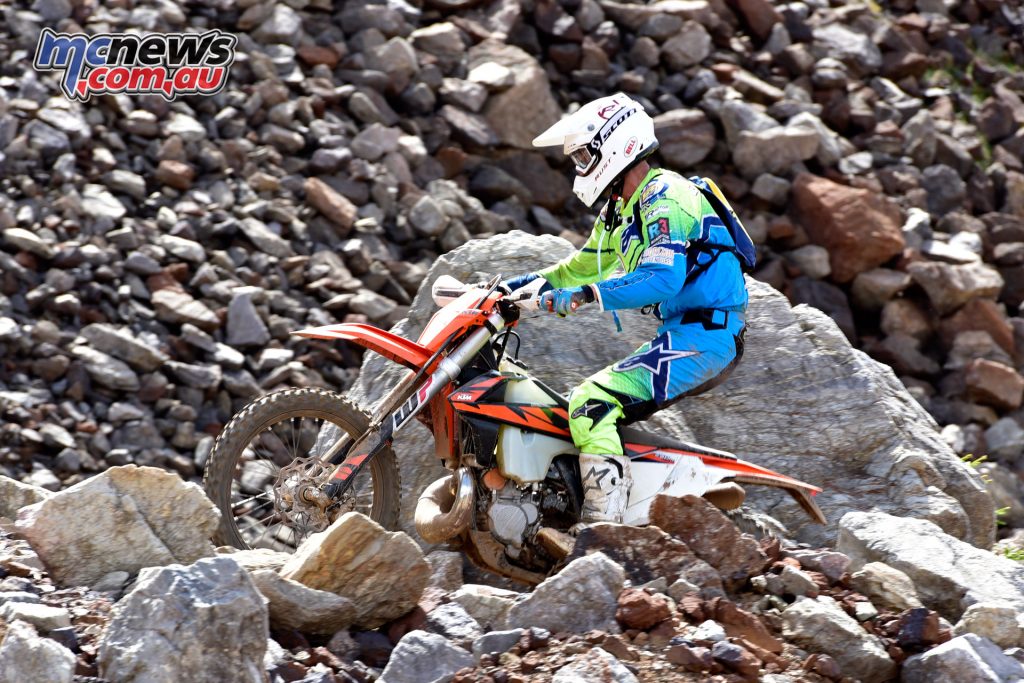
When you start a TPI model, it starts easy and it starts clean. From the get-go the fuelling is crisp, there’s none of that blubbering/choking until you clean it out with a few prolonged revs, you can just quietly give it a few blips of the throttle, allow the piston and rings and the cylinder bore to find their optimal interface temperature – and then go. And the ride – smooth is the adjective that comes to mind. Again and again.
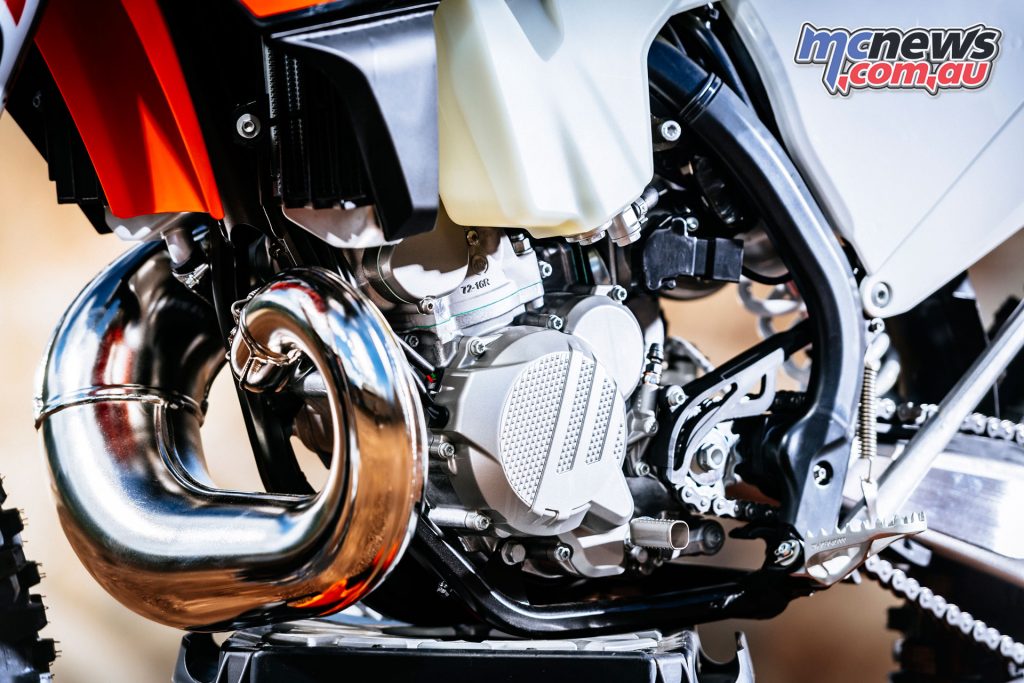
The KTM EXCs found their smooth last year (2017MY) with the counter balancer motors. In fact, at this launch KTM’s Jochi Sauer described those 2017s as ‘2018 models without the TPI’ – and that’s fair comment, but-for a fork tube mod and radiator guards (aside from TPI) they are identical to this year’s bikes (BNGs also aside).
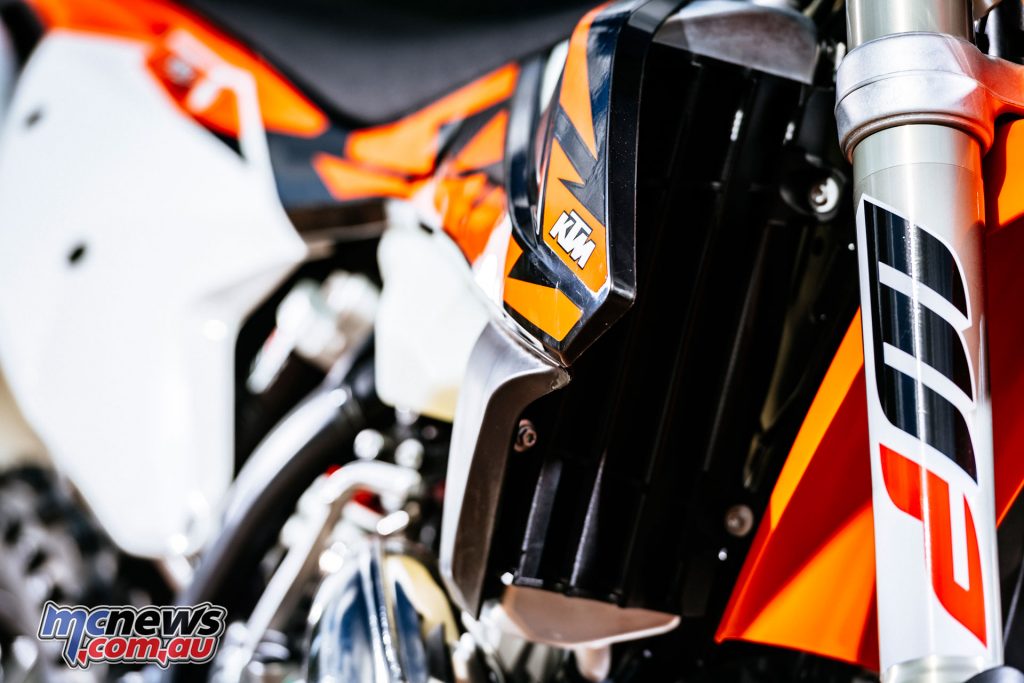
Only in the TPI bikes that smoothness feels even more apparent. Fuel injection makes for clean, linear fuelling from start to finish, and that combined with the counter balancer makes the experience complete. Being a clubman-level rider it was immediately apparent how easy TPI machines are to ride.
Neither the 250 nor the 300 want for more power, but the delivery is certainly as tamed as I’ve ever found. The rev-build is even and predictable – you’re never taken by surprise – so much so that the option of a soft map (the test bikes came with the optional engine mapping switch) felt superfluous, the ride was easy enough already.
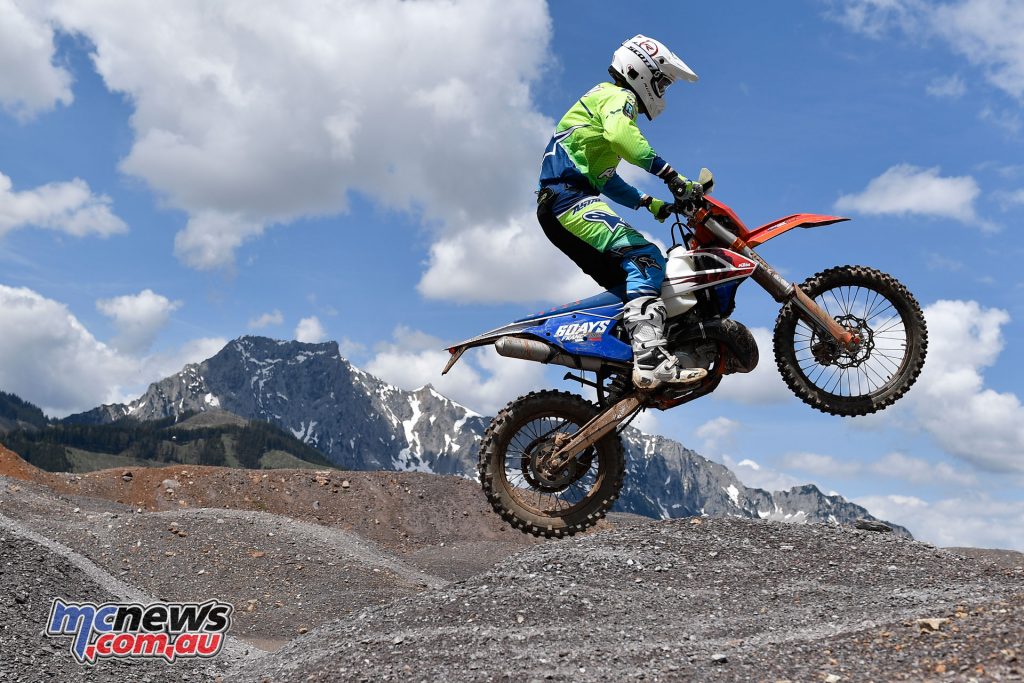
I’m sure expert riders will want more bark, although I’m equally sure the engineers will argue that they don’t actually need that – an easy-to-ride bike is a fast bike. But as the KTM engineers assured, if you want more snap in your ride you can still play with the power valve springs – they are options as before.
KTMs are so much in the majority in enduro paddocks these days that their ergonomics have become the norm. A few years back we might have discussed handlebars that were too low or too flat, PDS making the rear feel to high, that kind of stuff. This year, as it has been for a while, you jump on a KTM and instantly feel at home.
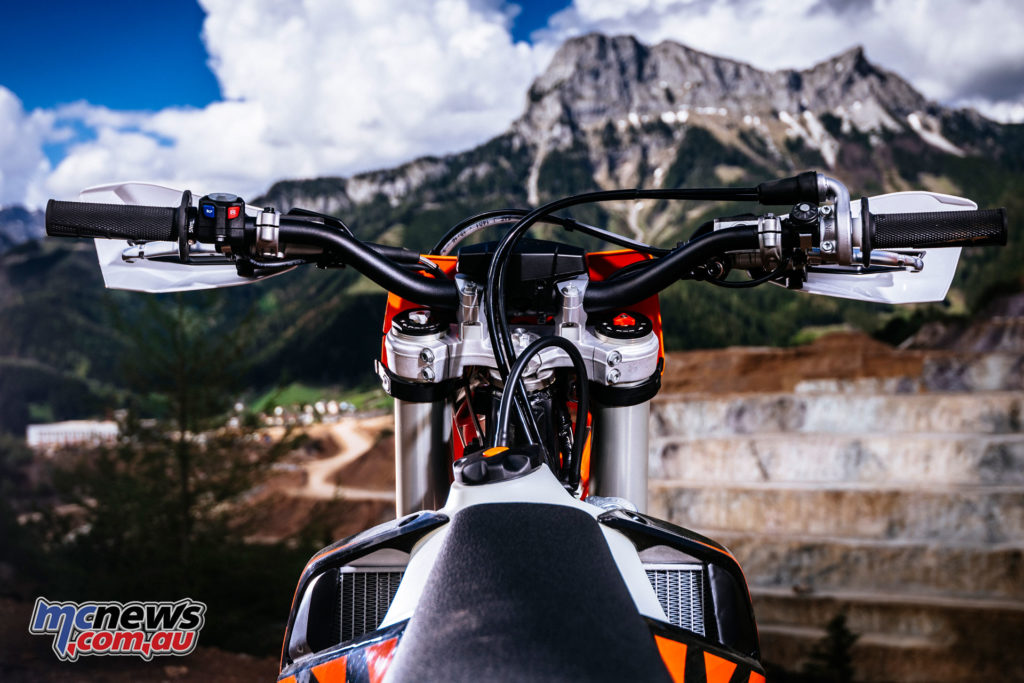
Either KTM has gently swung to our suggestions, or we’ve become entirely adapted to them. In any case, but for the slightest adjustment on the handlebar levers I didn’t need to adjust anything. The seat felt slim and flat, front to back. The bars were just right, the radiator panels weren’t too wide. Everything was where it should be.
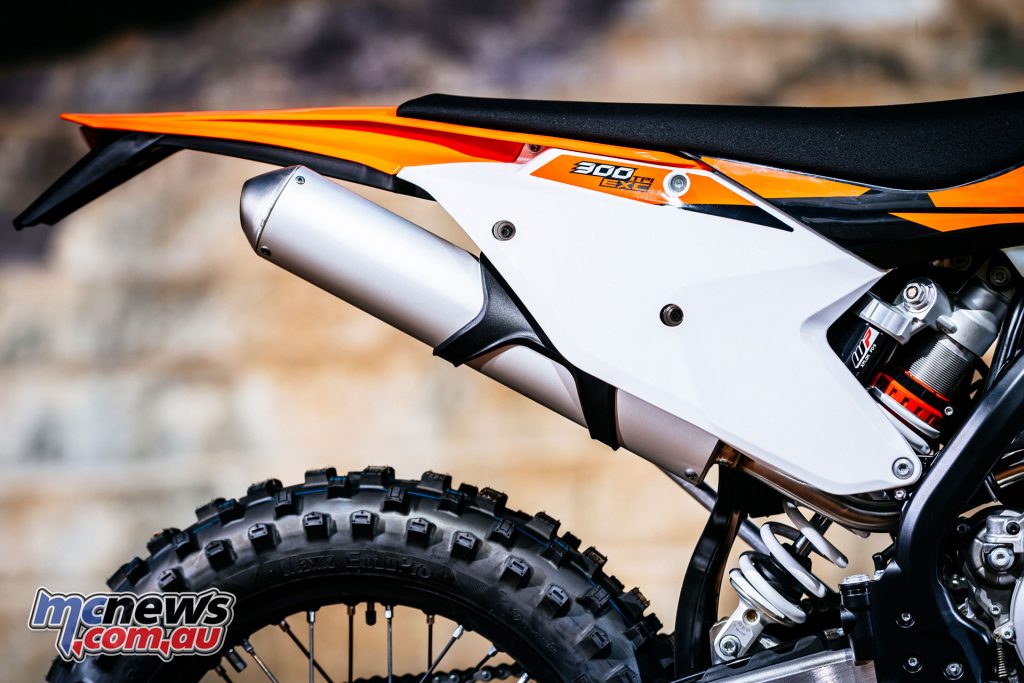
Handling and suspension were just fine for this clubman rider, too. For sure, with time to work through sag, spring settings etc, the ride would be improved even more – at 100kg in ride kit I’d probably be better off with firmer springs – but as a base to start from the setup feels spot on.
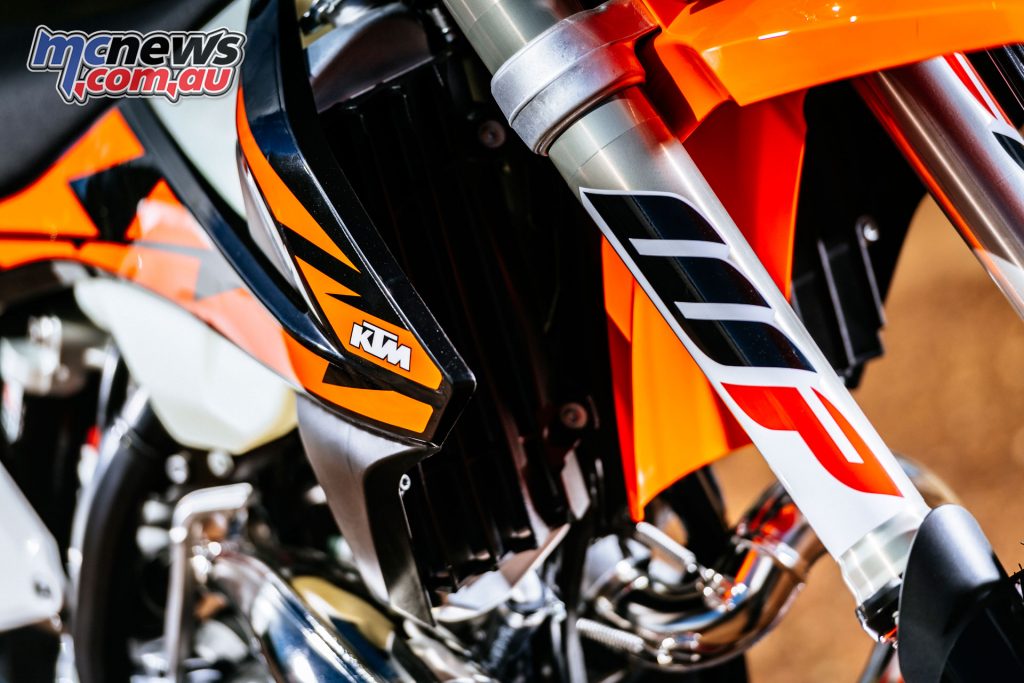
The steering is predictable and secure, the forks felt fine and given a day riding up and down this iron giant of a mine I was impressed that neither of my palms cut up. I’m sure those new screw-on ODI grips (as first fitted last year) make a big difference.
We always come to that same question when riding a 250 and 300 together – which is the better? That’s almost too difficult to answer. As always it depends on the kind of rider you are. This year the 250 felt to be the raspier, more racy of the two, a traditional E2 flier. The 300 meanwhile was again the extreme terrain king.
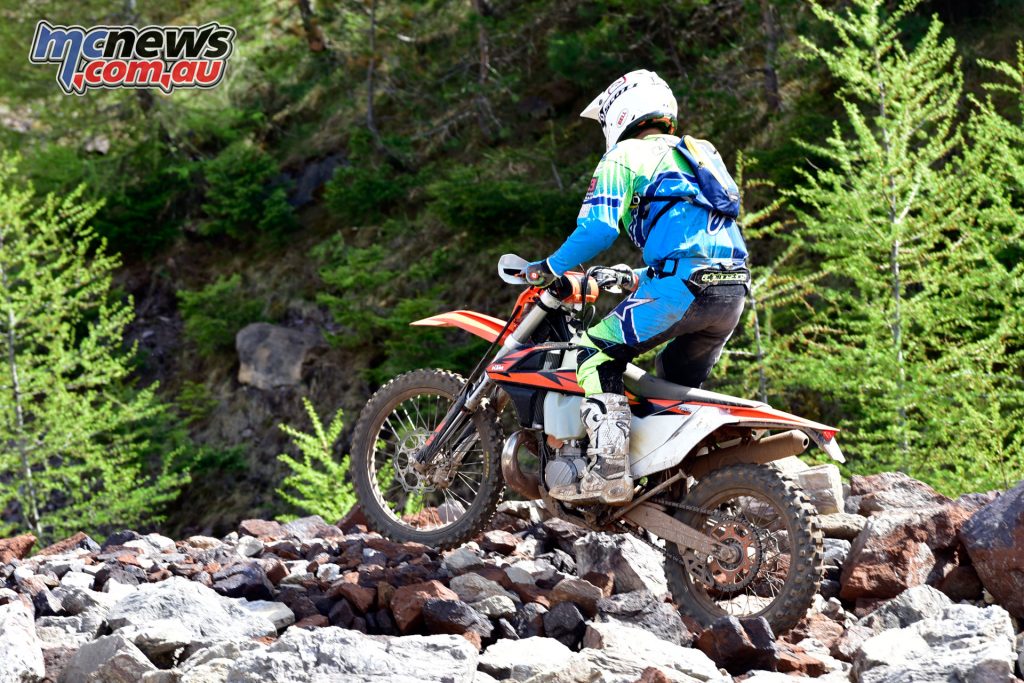
The only time I didn’t make it up those legendary Erzberg climbs was when I was riding the 250, coming up a foot short having misjudged the momentum needed to make the summit. I’d sprung over the same climb just minutes before on the 300, no sweat, but with the 250 just a little more attention was needed (obviously).
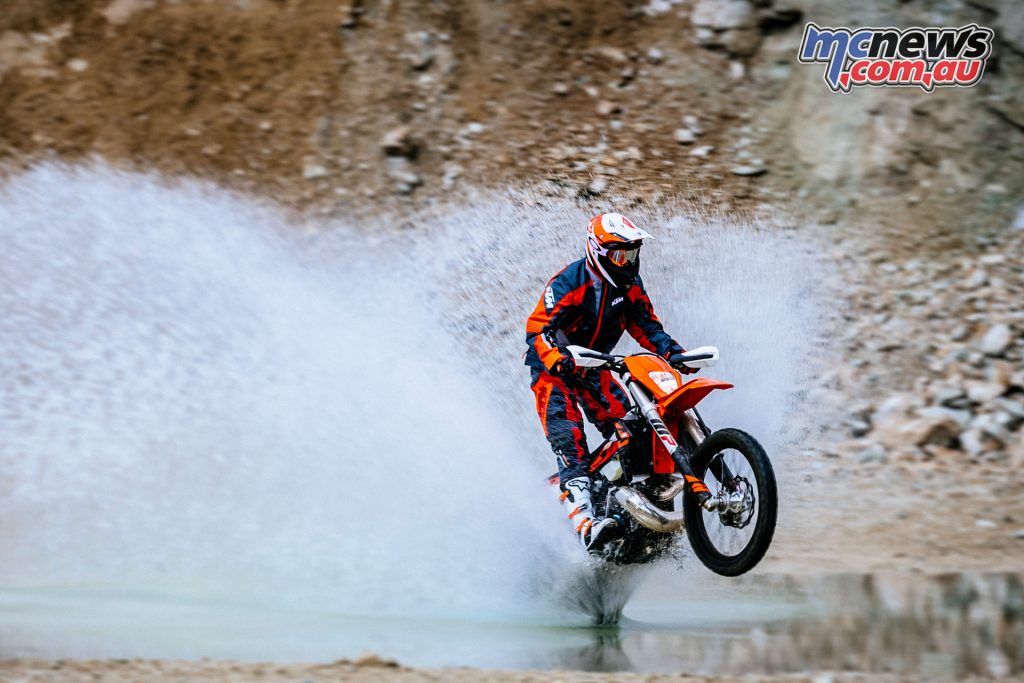
The trade-off is the 250 feels that little bit more nimble through the trees and can be thrashed that little harder without fear of it getting too animal. Racers generally love the 250, lazy lard-asses like me (and conversely ninja extreme riders) prefer the low rev never-fail dependability of the 300. Nothing’s changed there.
Riding the 2018 TPIs then, it’s just like riding the 2017s only with better forks and even smoother power delivery. TPI is like a little honey over your favourite breakfast, it’s just so, so sweet. And that would be reason enough to buy a 2018 EXC TPI, but actually it’s the rest of the TPI story that really tips the balance.
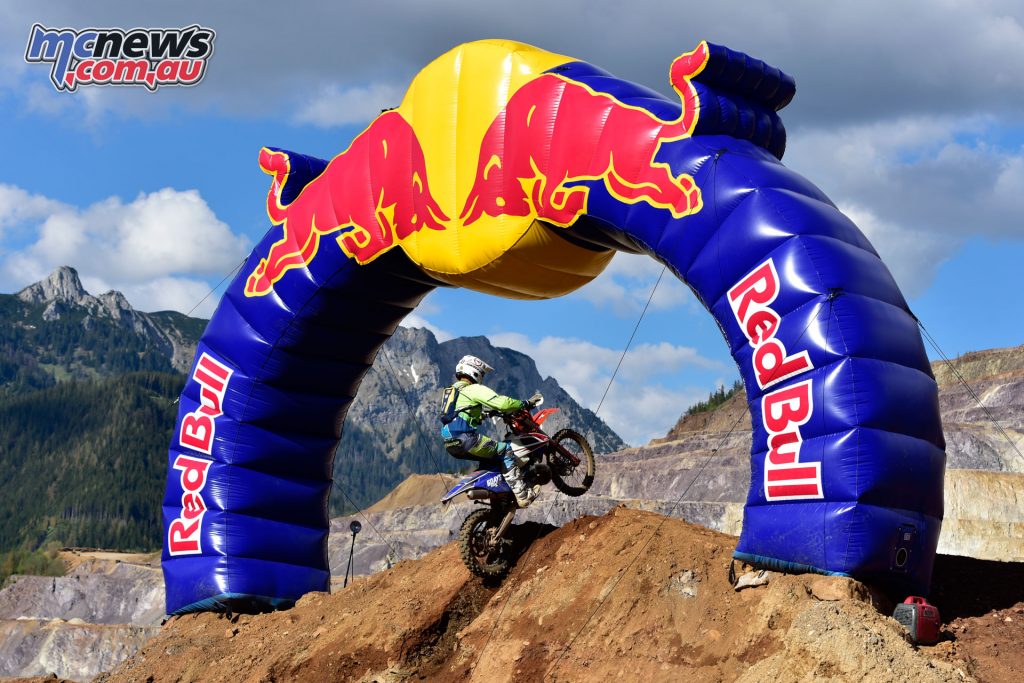
I like that KTM has managed to totally complete the packaging. FI needs a fuel pump. So the KTM engineers found they could just raid the EXC-F cupboard and there’s a unit, fully fail-tested, ready to go – just drop it into the bottom of the translucent fuel tank.
FI also calls for oil injection, and again a neat little 750ml tank sits in an easy location under the backbone frame, again with a neat little fully integrated pump and easy filling via a filler cap just behind the headstock.
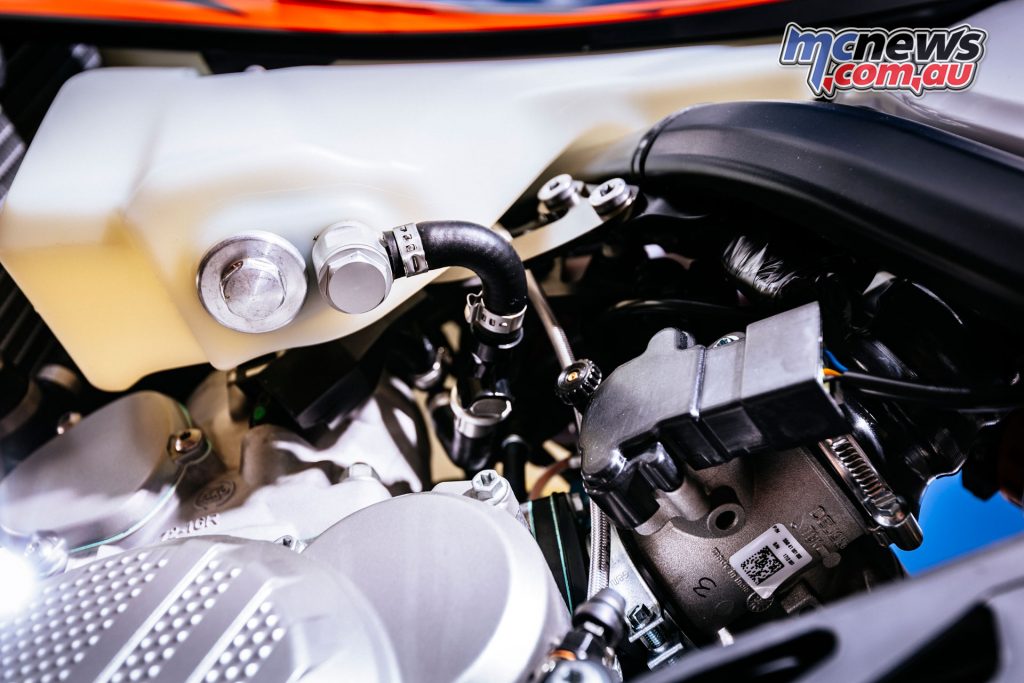
The fuel injectors appear as a pair of modest plug-in units on each the side of the cylinder, with two short pipes and T-piece to the fuel pump. It’s all so super-tidy, neat little sub-systems that can be detached and reattached in just minutes, there’s nothing that the reasonably competent home mechanic can’t deal with.
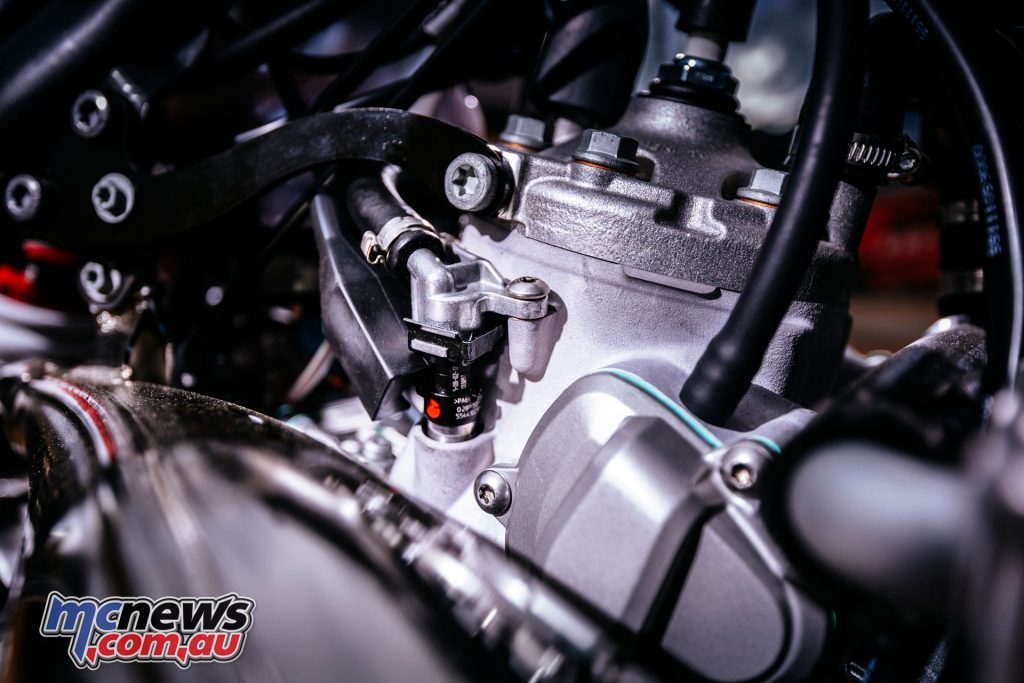
The worst case scenario is possibly having to take a sub-assembly to a dealer for checking out. If drawing a complete blank then the EMS unit allows a computer diagnostics check at the dealer, too.
It’s also the ease of use which is so impressive. Premixing is an arse of a job, and doing away with that is absolutely fine by me. The fact that TPI has also vastly improved the fuel efficiency is another boon for owners. It’s ridiculous just how little these two bikes drink. And that goes for oil as well.
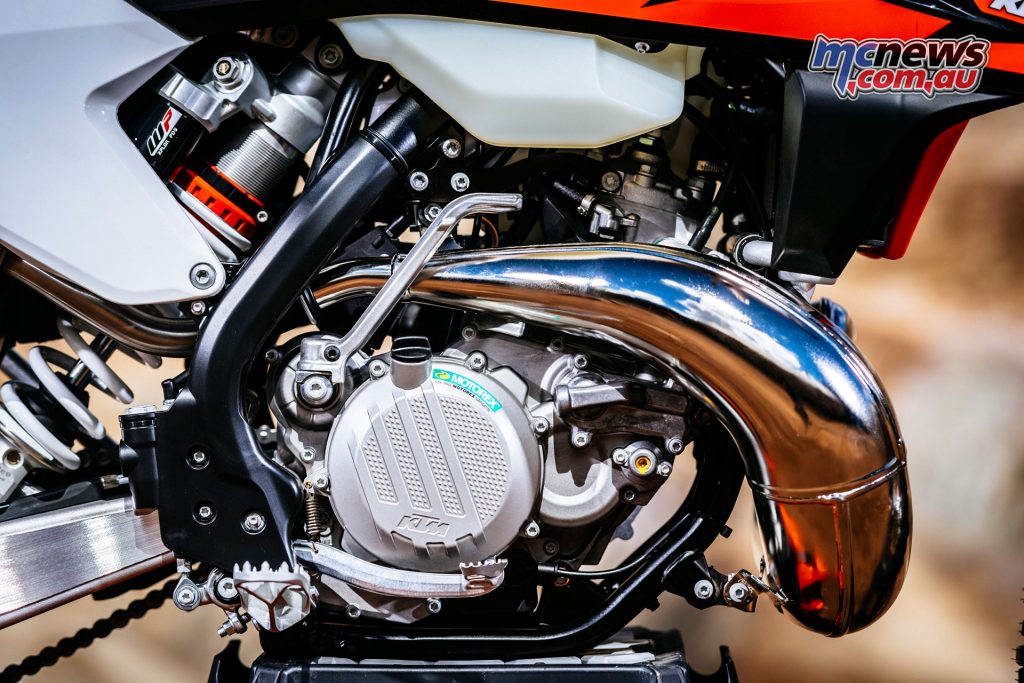
KTM is talking 20-30 per cent greater fuel range and that looked conservative when I was checking the fuel tanks after the morning and afternoon ride sessions, these bikes look to be approaching 250F fuel consumption rates. Cross-country racers especially are going to rave about this advantage, for sure.
KTM stressed just how long and difficult a road it was to get to this point. For years they’ve teased us with ‘maybe next year’ to the eternal ‘when?’ question over FI. Now it is next year and it was worth the wait. KTM have made the switch, but not too soon. This is one thoroughly sorted product; tested, improved, simplified, right. And, as it turns out, better.
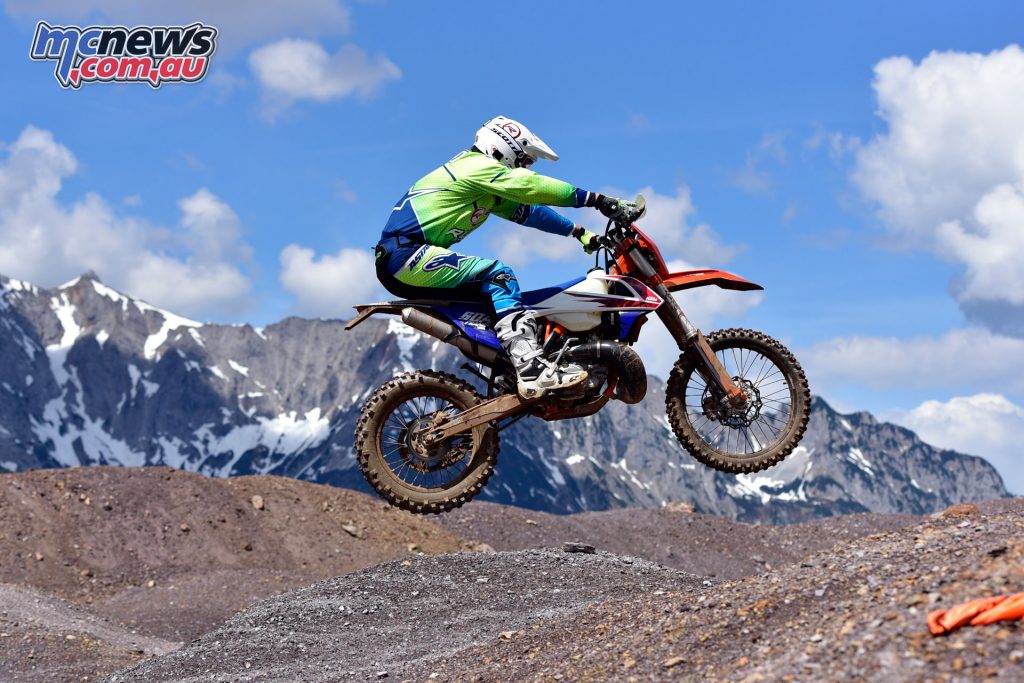
At a glance new vs old
2017 250/300EXC / 2018 250/300EXC TPI
- Fuelling – Mikuni TMX38 Synerject TPI / Dell’Orto 39mm throttle body
- Dry weight – 100kg / 103kg
- Seat height – 960mm / 960mm
- Fuel capacity – 9.5 litres / 9 litres
- Wheelbase – 1482mm / 1482mm
- Steering angle – 63.5º / 63.5º
- Ground clearance – 370mm / 370mm
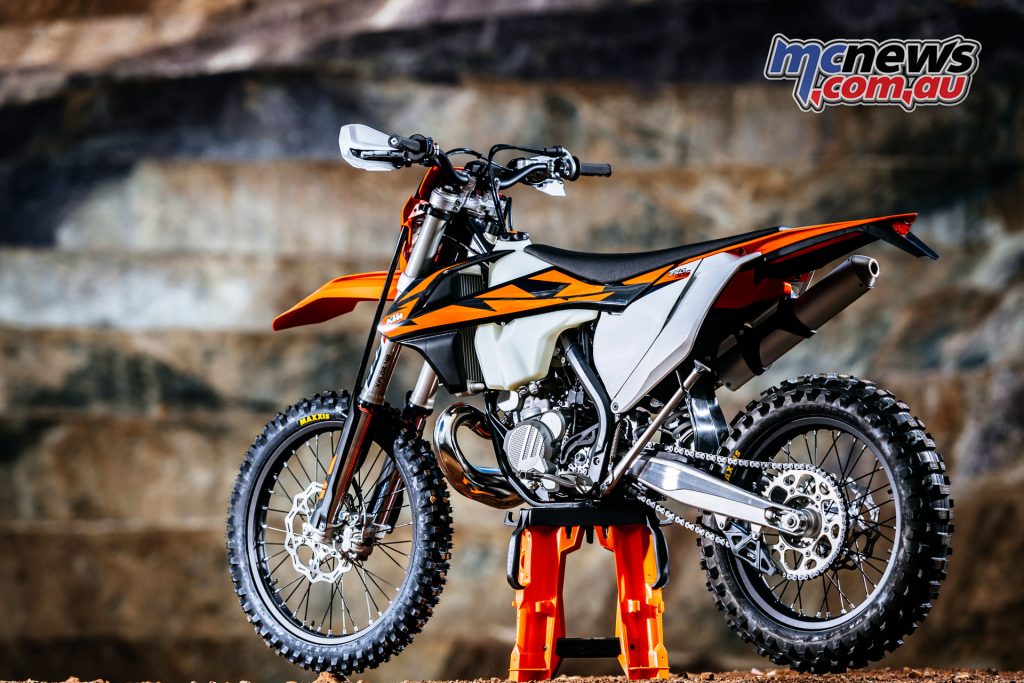
2018 KTM 250 (300) EXC TPI Specifications
- Engine – 249.9cc (293.2cc), liquid-cooled, two-stroke single
- Power (claimed) – 51hp (54hp)
- Torque (claimed) – Not quoted
- Bore x stroke – 66.4 x 72mm (72 x 72mm)
- Starting system – Electric
- Fuel system – EFI (TPI), Dell’Orto 39mm throttle body; oil injection
- Clutch – Wet, multi-plate, Brembo hydraulically operated
- Transmission – Six-speed, chain drive, 14/50T
- Frame – Steel cradle (aluminium sub-frame)
- Swingarm – Aluminium
- Front suspension – 48mm USD WP Xplor 48mm telescopic fork, preload, rebound and compression adjustable, 310mm travel
- Rear suspension – PDS WP Xplor monoshock, preload, rebound and hi/lo speed compression adjustable, 300mm travel
- Brakes – 260mm disc, Brembo two-piston caliper front; 220mm disc, one-piston Brembo caliper rear
- Wheels – Spoked with Excel aluminium rims
- Tyres – 80/100-21in front; 140/80-18in rear
- Seat height – 960mm
- Ground clearance – 370mm
- Wheelbase – 1482mm
- Rake/Trail – 26.5°/na
- Claimed weight – 103kg (no fuel)
- Fuel tank capacity – 9 litres
- Price – $13,295 ($14,495) RRP inc. GST
- Contact – KTM Motorcycles – www.ktm.com/au/
